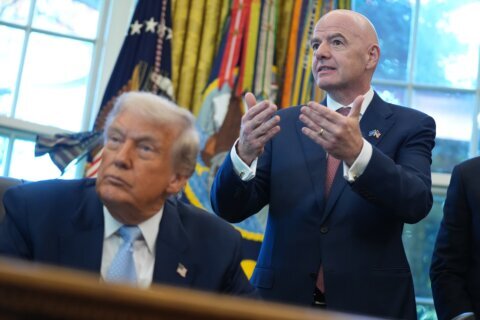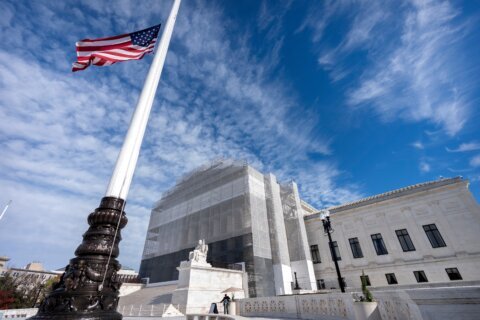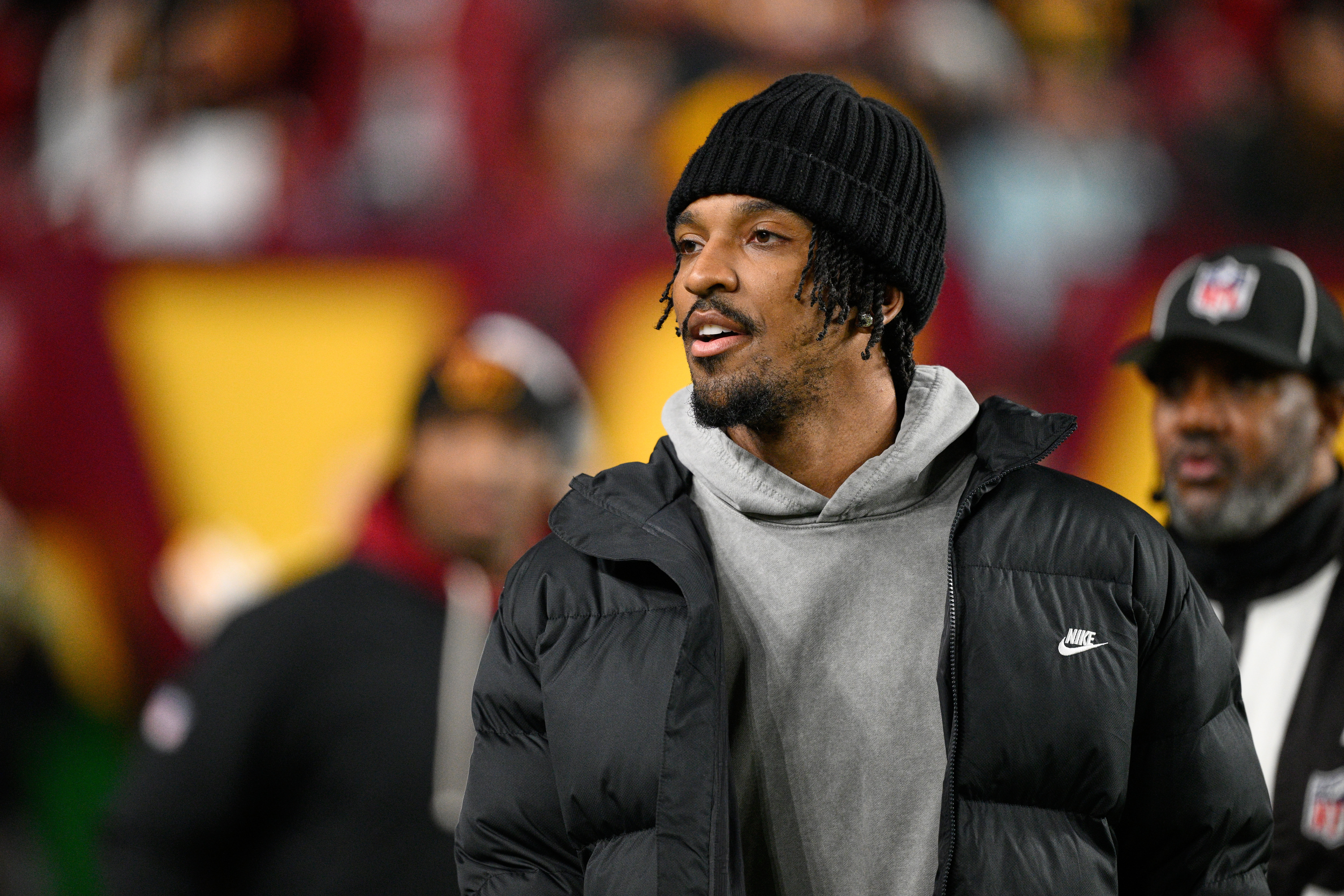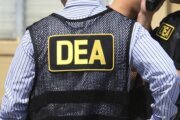WASHINGTON — “This is just the beginning.”
Those were the words of Ed O’Bannon, the former UCLA basketball player who became arguably more famous than he ever was in his playing days, when the decision in the lawsuit bearing his name came down last Friday.
At its most basic, the decision from U.S. District Judge Claudia Wilken issued an injunction preventing the NCAA from “enforcing any rules or bylaws that would prohibit its member schools and conferences from offering their FBS football or Division I basketball recruits a limited share of the revenues generated from the use of their names, images and likenesses in addition to a full grant-in-aid.”
But what exactly does this mean, and what does it mean for the future of college athletics as we know it?
The case
It took five years — one longer than O’Bannon’s storied career at UCLA — for the case to be decided. And while the NCAA has already said it will appeal the ruling, the principal finding was that the NCAA was in violation of the Sherman Antitrust Act, America’s benchmark legislation from 124 years ago.
This line of legal action had been used before, but it had not succeeded until now. Essentially, Wilken’s decision defines the market for college athletes in which universities compete for their services, and rules that the NCAA violates the law by colluding to keep compensation for these athletes restricted to their scholarships.
Secondarily, she identified a market for players’ names, images and likenesses (NIL), which is currently controlled entirely by the NCAA, with student-athletes receiving no compensation at all.
“I think some of the precedent that was set in this decision was extremely significant,” says Tim Epstein, chair of SmithAmundsen’s Sports Law practice group in Chicago, who also teaches courses in sports and entertainment law at Loyola University Chicago School of Law.
A lot of moving pieces in play here — outside of the nearly 100-page decision — may have an impact. Here is a breakdown of what they are and how they may be impacted by the ruling:
Names, images and likenesses
What exactly are names, images and likenesses? The genesis of O’Bannon’s own connection to the case came when he saw an avatar that was clearly intended to represent him in a video game. While the NCAA and member schools have profited off the licensing of such games, the athletes themselves never have — again, under the guise of amateurism.
␎ 
Former UCLA basketball star Ed O’Bannon has become the face — and the name — attached to the case against the NCAA. (AP Photo/Isaac Brekken)
Under Wilken’s ruling, the student-athletes are able to earn up to $5,000 above the value of a full college scholarship.
Amateurism was already dead
One of Wilken’s biggest pieces of evidence for why college athletes should be paid came down to the NCAA’s very own muddied definition of amateurism, and the organization’s claim that consumer demand for college football and basketball is somehow reliant upon this ideal.
“Attacking the NCAA’s argument for upholding this idea of amateurism — for the ability for student athletes to profit from their image, name and license — was fundamental to the case,” says Epstein.
Of course, tennis players are allowed to make professional earnings as teenagers before going to college, yet still retain their amateur playing status. Athletes can play professional baseball, then return and use their amateur eligibility in other sports, like quarterback Chris Weinke did at Florida State after playing six years in the Toronto Blue Jays’ minor-league system. Even if those glaring examples didn’t exist, the idea that amateur athletics were reverent in some intrinsic way was shot down by Wilken.
“Such inconsistencies are not indicative of ‘core principles,'” she said. “This evidence demonstrates that the NCAA’s restrictions on student-athlete pay is not the driving force behind consumer interest in FBS football and Division I basketball.”
Another part of the amateurism argument involves the concept of competitive balance. But the idea that high-end Division I athletics departments aren’t already engaged in a full-on coaching arms race is laughable. Nearly two years ago, USA Today compiled data on head coach salaries in college football. The average annual salary for head coaches at the Football Bowl Subdivision level that year was $1.64 million. That was well before the University of Texas and Texas A&M each committed $5 million per year to their head coaches, and before the University of Alabama’s Nick Saban signed a new eight-year deal that will pay him $6.9 million per year.
The NCAA currently allows 63 football scholarships at the FCS level. If the $5,000 per athlete came from the school, that would amount to just $315,000 per year, or less than 20 percent of the average head coach salary.
Of course, it’s not quite that simple.
“Even within the power conferences, there are haves and have-nots,” says Epstein. “Not everyone is Alabama. That’s not to say that each school can’t afford to make this payment; it’s just a matter of how the accounts are balanced.”
The NCAA, meanwhile, is a $16 billion-per-year industry. The money is there; it’s just a matter of where it comes from.
Where does the money come from?
This seems open to interpretation.
“Either the NCAA can pay the conferences and schools through TV contracts, or the money just comes out of the athletics general fund,” says Epstein.
And while athletes can now ostensibly make money from NIL, Wilken stopped short of allowing student-athletes to receive direct endorsements. Large-scale contracts with Nike and other athletic conglomerates continue to run through the universities, based on this model.
The question of whether the line is drawn from the NCAA or individual athletic departments is sure to be a key point moving forward. And the amount of total additional money over all sports — if all male and female athletic programs are eventually deemed to be funded the same way — raises those stakes much higher.
Next steps
“If that first penny actually gets put down for a male student-athlete who participated in football or basketball, you have Title IX implications that come into play,” says Epstein.
That point raises plenty more questions, ones that were not answered by the O’Bannon decision: Will universities be able to afford to pay student-athletes in non-revenue generating sports such as cross country or volleyball? Will the Title IX implications, as former Oklahoma State basketball player and current CBS sports broadcaster Doug Gottlieb suggests, potentially kill off sports such as wrestling and baseball?
“In terms of the practicality of that payment, that’s a hurdle they are going to have to cross,” says Epstein.
The judgment would not go into effect until July 1, 2016, per the ruling.
Other cases involving the paying of student-athletes are pending. One such case, also in front of Wilken, has a much more aggressive line against NCAA precedent. We reached out to sports legal expert Jeffrey Kessler for his take on the O’Bannon ruling, but he declined to comment, as he is part of the legal team on that case.
Meanwhile, the Northwestern University football case presses on. After the initial Chicago National Labor Relations Board ruling in favor of the student-athletes unionizing, a House committee conducted a hearing on the matter, which continues to be open and runs parallel to the O’Bannon case.
“The way the NU case currently stands, the local office of NLRB says they have ability to unionize,” says Epstein. “Assuming that the national office says Chicago made the correct decision, that opens up a box that has been sealed to this point.”
Contrary to the NCAA’s claims, at least one man believes the college sports product might just improve with the payment of players. O’Bannon himself argues that allowing college players to get paid while still in school alleviates the pressure to leave early for the promise of riches at the professional level.
While that ideal is an honorable one, and would presumably help graduation rates in the process, Epstein questions its feasibility.
“I think for any student-athlete that has the opportunity to make a significant amount of money, and has a financial need within their family, I can’t imagine this is going to prevent that,” says Epstein. “Maybe a couple of kids on the fence, but I don’t think this is significantly going to change.”
Follow @WTOP and @WTOPSports on Twitter and WTOP on Facebook. .







